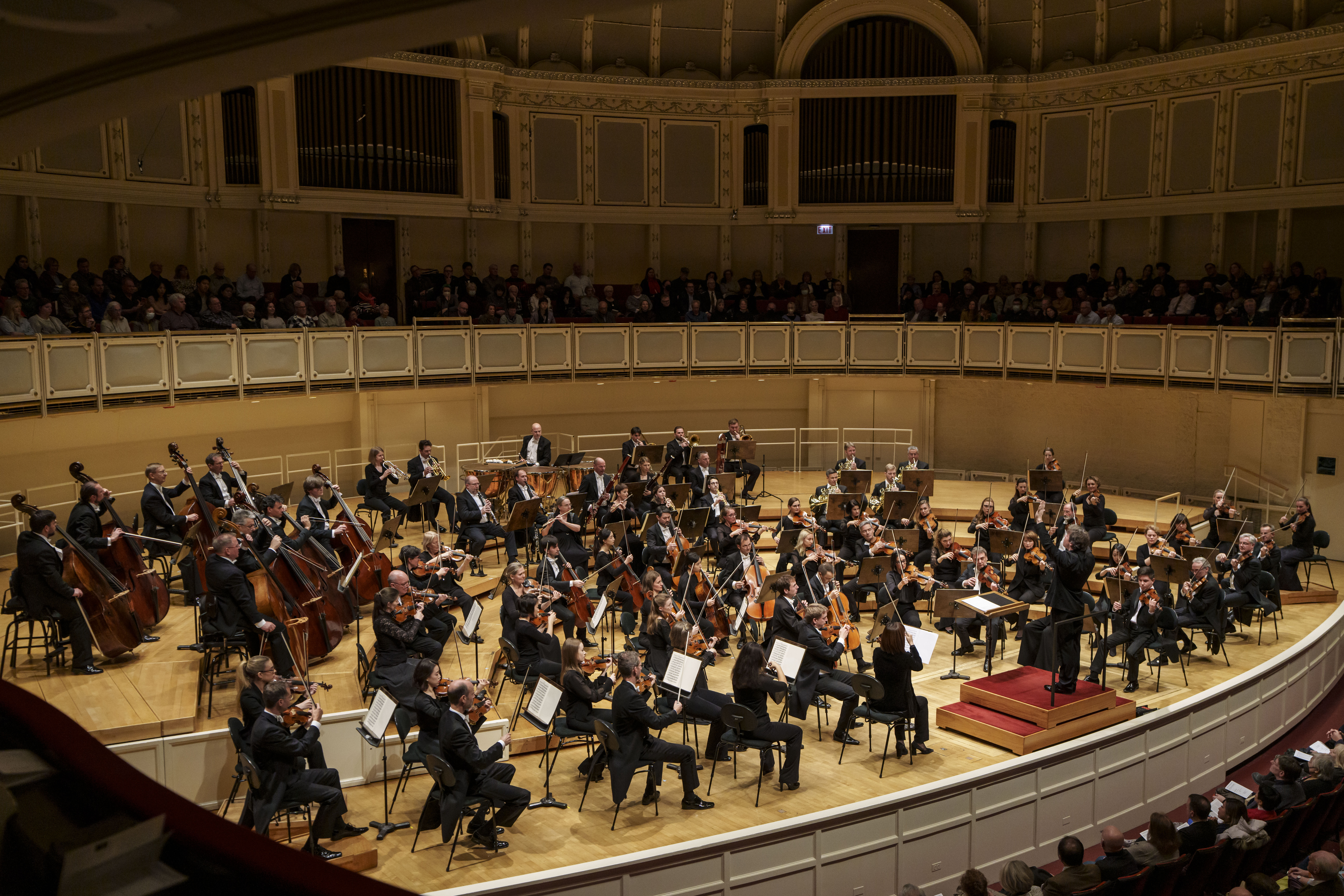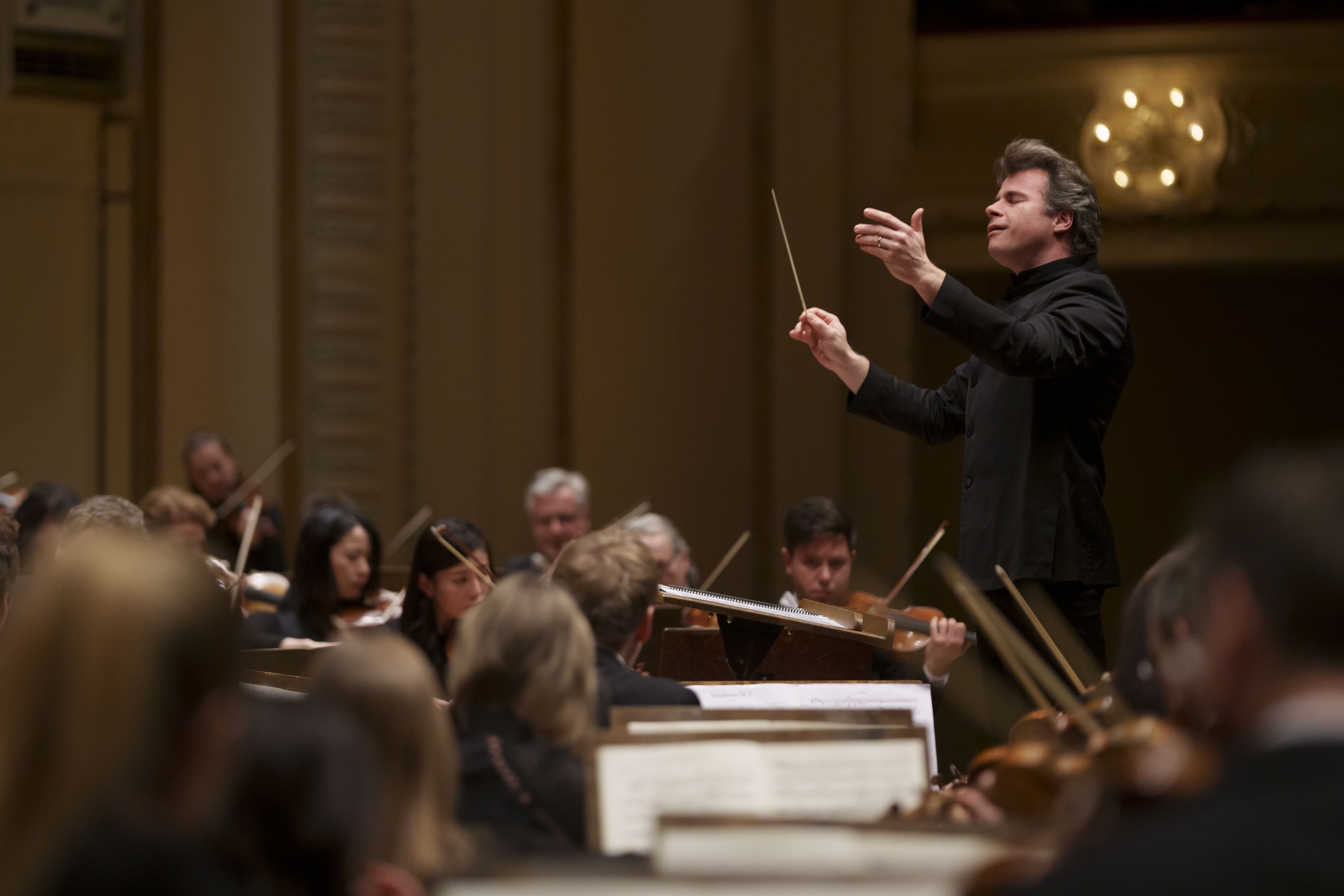
The music of Johannes Brahms is featuring prominently in a series of concerts at Symphony Center this week. On Tuesday night, under the direction of Jakub Hrůša, the Staatskapelle Berlin gave a masterful performance of two of his four symphonies, No. 3 in F-major, Op. 90, and No. 1, in c-minor, Op. 68.
Dating back to 1570, Staatskapelle Berlin is one of the oldest orchestras in the world. Much of its work is with the opera company, but it also performs on its own. Tuesday’s stop in Chicago is in the middle of a tour of Canada and the United States.
Originally, the CSO’s former Music Director Daniel Barenboim was scheduled to be leading these concerts, but illness prevented him from traveling. Czech conductor Jakub Hrůša was able to step in, and he held things together wonderfully on Tuesday evening.
One of their performance practices is entering the stage together. It was strange not to see the musicians already onstage practicing before the concert. Instead, they all entered at once and stayed quiet until they tuned up. A very nice touch.
Brahms’ Symphony No. 3 in F-major Op.90 is unusual in that it starts out with a roar but ends in a whimper. With no ending bombast to rouse the audience into a hearty ovation, it took a few moments for the audience to react once Hrůša put down the baton. it’s an odd way to end a concert, and it’s no surprise that Staatskapelle Berlin played it first on Tuesday night.
The opening movement harmonically shifts back and forth between the major and minor keys. For years, I thought this work was in f-minor; the opening movement’s exposition even ends in a minor key. I eventually discovered my error, but, whatever the key, the one word that best describes this work is melancholy. Staatskapelle Berlin captured this feeling well.

Their mastery came forth from the opening notes, when a brass and winds chorale herald the main theme. After that, the orchestra balanced perfectly as the sections traded the melodies back and forth in a seamless fashion. The woodwinds were especially effective in blending with the rest of the orchestra. One memorable passage was the transition to the secondary theme in the opening movement.
Jakub Hrůša, with baton in his right hand, has very sweeping style that is rather restrained. He was one with the music, very careful in pointing to specific sections and players. He went all out in the finale’s dramatic opening sections.
After intermission, we got to see the explosive side of Hrůša and Staatskapelle Berlin. A lot has been written about the challenge Brahms faced in composing his first symphony, which took him 14 years to finish. The ghost of Beethoven haunted him; how could any Viennese composer build on the amazing impact created by Beethoven’s symphonies, especially the 9th, which ends with a vocal finale set to Friedrich Schiller’s poem, Ode to Joy?
In his first symphony Brahms found a way, starting with Beethoven’s favorite key of c-minor. The opening movement has melodies formed with the four-note, rhythmic motif that Beethoven used a lot, most famously in the fifth symphony. For the finale Brahms came up with a marvelous adaptation of Ode to Joy. While not using vocal soloists and chorus, he discovered a new melody that can practically be superimposed onto Ode to Joy. While Brahms’ new tune is played, one can almost hear Beethoven’s in the background. It’s a stroke of genius.

Hrůša and Staatskapelle Berlin gave it everything possible. Memorable moments abounded. Their transitions were wonderful, especially the gradual crescendo between the development and recapitulation of the opening movement. The oboe, clarinet, and violin solos in the second movement were beautiful. Brahms reserves the trombones for the introduction of the main theme in the finale. Even though they had been sitting for over 30 minutes, the trombones gave a lovely clarion call to the magic that followed.
The biggest impact, however, was the fabulous way the finale concluded with tremendous adrenaline on steroids. Unlike the third symphony, there was no doubt when the first symphony ended, and the audience immediately jumped to its feet. Chicago audiences give lots of standing ovations, but this one was well deserved.
Brahms, with the help of Arnold Schoenberg, reappears this weekend at Symphony Center when the Chicago Symphony Orchestra, under the direction of Michael Tilson Thomas (affectionately known as MTT), performs a program dedicated to Wolfgang Amadeus Mozart. Following his Six German Dances, K.509, pianist Orion Weiss joins the action to perform my favorite piano concerto by Mozart, No. 23 in A-major, K.488. Ending these CSO concerts is Schoenberg’s transcription for orchestra of one of Brahms’ greatest chamber music works, the Piano Quartet in g-minor, Op. 25. This is the sort of program I go out of my way to hear.
These concerts will be Thursday, November 30 at 7:30 pm, Friday, December 1, at 1:30 pm, Saturday, December 2, at 7:30 pm, and, unusually for the CSO, Tuesday, December 5, at 7:30. 220 S. Michigan Ave, Chicago. For more information, click here.
On Sunday, December 3, CSO Mead Composer-in-Residence Jessie Montgomery will be hosting MusicNOW in a program entitled, "Montgomery and the Blacknificent 7." It features contemporary music by members of the Black composers' collective known as the Blacknificent 7. At Symphony Center, 4:30 pm. For more information, click here.
